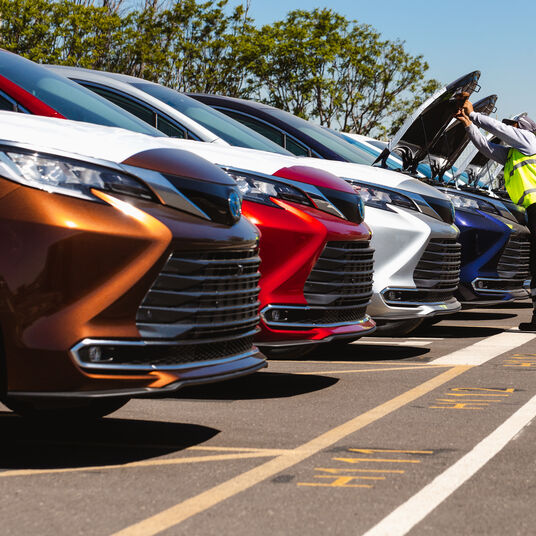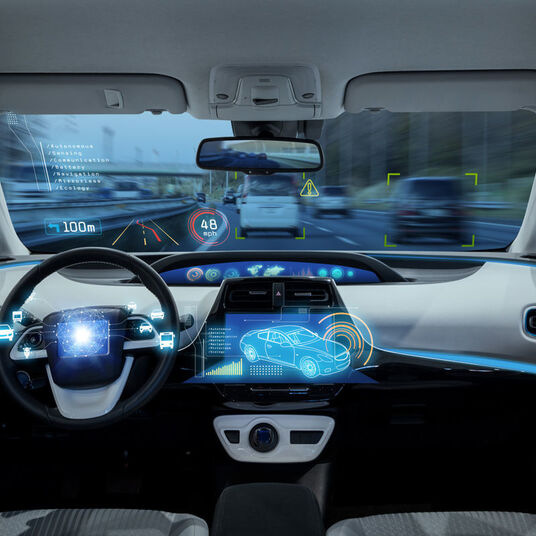Online vehicle sales: The new normal?
Erik Solum, senior manager, Global Market Insight at Wallenius Wilhelmsen, considers the rise of online vehicle sales and what this means for automotive OEMs and the traditional finished vehicle supply chain.

The rise of the digital car buyer
There was a time not long ago when OEMs competed largely on their engineering capabilities: factors such as excellent driving performance or vehicle reliability. These qualities still matter to today’s consumers, but they are table stakes. The new frontline is increasingly one where tech-enabled, data-rich, electric vehicle (EV) companies currently have the upper hand: customer experience, especially when it comes to buying online.
The bar is already high. For some consumers, visiting a car showroom has lost its appeal. They prefer the convenience of digital interactions.
Analysts suggest some 50% of car buyers under the age of 45 are likely to purchase their next car online and are interested in contactless sales and servicesSenior manager, Global Market Insight
In fact, research by McKinsey shows that prospective buyers across all regions and age groups, including customers between 55 and 70 years old, are less inclined to want to physically interact with sellers at car dealerships.
Electric vehicle OEMs driving behavioural change
EV companies have tapped into the spirit of the time. Tesla sells direct to its customers, who can buy a car with fewer than ten clicks, choosing from a simplified range of just four models and with no price haggling.
China’s NIO also sells direct and only through its website and app. Both companies offer a range of add-on, customer-centric services – from worry-free energy packages, where an app click brings someone to charge the vehicle on the spot, to a ‘battery as a service’ package that rents the battery to the buyer by the month.
With statistics showing high interest for ‘at-home services’, such as having cars delivered to avoid the need for a dealership visit and options for contactless car-buying, OEMs will need to rapidly discover, design, scale and constantly refine solutions that thrill customers, generate new sources of revenue and keep costs in check – an approach honed by leading customer-centric companies.
A more customer-centric approach needed
There can be as many as 900 individual touchpoints during a traditional car buying journey – these reach across websites, digital advertising and CRM (customer relationship management) systems that are built into the physical dealership. All these digital touchpoints need to be connected to meet customer expectations.
And when they do, you can get their full attention and hopefully, sales. To adapt to the needs of the customer, the digital sales journey must be multichannel or omnichannel. The days of an exclusively offline purchase no longer exist.
This is a major challenge for dealers who need to create an ecosystem that is embedded in their dealership and integrated with their sales manager, the salespeople and the after-sales team. Plus, this whole process needs to be seamless throughout.
Finished vehicle logistics reimagined
All this begs the question: what does this mean for the finished vehicle supply chain?
For one, it could mean possible cost savings for both the manufacturer and the end customer when cars are delivered to the home of the car buyer.
What will happen to dealerships remains to be seen. In Europe, for example, the average age of new car buyers is above 50 years old. While we’ve touched on the fact that people in this age group are increasingly considering online buying as a relevant alternative to visiting dealers, some continue to value personal and physical relationships – and this goes for service and maintenance too.
Certainly, when you consider that interest in buying cars entirely online remains at 59% globally with regional variation, ruling out dealerships altogether is premature. Instead, to combine the strength of their widespread dealer network and tap into changing buyer behavior, many automakers are turning towards an agency model – with dealers working within the sales channels and prices defined by the OEM.
The result? End customers get greater transparency and faster delivery; OEMs reduce overall inventory levels; and dealers are protected from competition from online platforms.
Going forward, logistics providers will arguably face different needs from automotive OEMs to meet this changed landscape, but there is also opportunity too – to build on both white glove delivery models that provide home deliveries of new cars and mobile fleet businesses to meet the changing requirements of fleet customers.
Whatever the future holds, buyer behavior has already started to shift, and finding new ways to stay relevant and up to speed is essential – not just for OEMs but logistics providers, too.
Sources: McKinsey, Deloitte, Automotive News Europe, Bloomberg, Reuters


